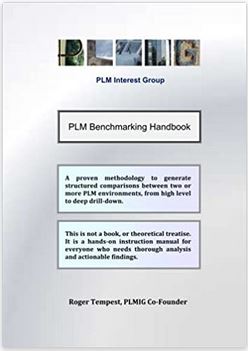|
PLM Interest Group |
|||||||||||||||||||||||
|
|
|
|
|||||||||||||||||||||
|
|
|
|||||||||||||||||||||
|
|
|
|
|||||||||||||||||||||
|
PLM Benchmarking Handbook
Benchmarking is at the heart of Continuous Improvement, Total Quality and good management practice. Benchmarking helps you understand where you are now, and where you should go. You should benchmark your PLM performance to position it against that of other companies, and to understand how to improve it. But how do you benchmark performance in something as complex as PLM? The PLM Benchmarking Handbook embodies a flexible, open, and industry-independent Benchmarking Methodology that can be used to conduct PLM benchmarks, internally or with external partners, at any desired level.
By the nature of PLM, some of the measures may be exact or quantitative, but many will be qualitative. The Handbook has been designed to overcome this problem, yet be usable in any PLM benchmarking situation. It provides a mechanism to enable two unrelated companies to benchmark their PLM environments against each other in a thorough and revealing way, but it is equally applicable to an organisation that would like to get a first internal appraisal of its PLM situation. Main Benefits of Use
See the Full Table of Contents Details The PLMIG PLM Benchmarking Handbook Version 2.0 is a single 67-page document containing nearly four hundred questions and is provided with Q&A support to PLMIG Members, so you will receive a copy if you join with any class of Membership. Alternatively, you may buy hard copies from Amazon or electronic copies from the Store. For more information about PLM Benchmarking, or the Handbook itself, contact benchmarking@plmig.com. © Copyright 2025 PLM Interest Group |
||||||||||||||||||||||
| <<< Return Home | |||||||||||||||||||||||
|
|
|
|
|||||||||||||||||||||





